The first Stapleford Hall was built in 13th century. Sir John Borlase Warren was born at the Hall in 1753. He joined the navy and rose through the ranks, becoming admiral. He was also ambassador to the Russian court, in St Petersburg, and MP for Nottingham (1796–1806). The Warren Arms was built in the 1750s, taking its name from the coat of arms of the Warren family, who lived at Stapleford Hall for more than 300 years. The Hall was demolished in 1935. The Warren Arms stood almost opposite this pub, until it was demolished, despite protests, in 2009.
A photograph and text about The Admiral Sir John Borlase Warren.
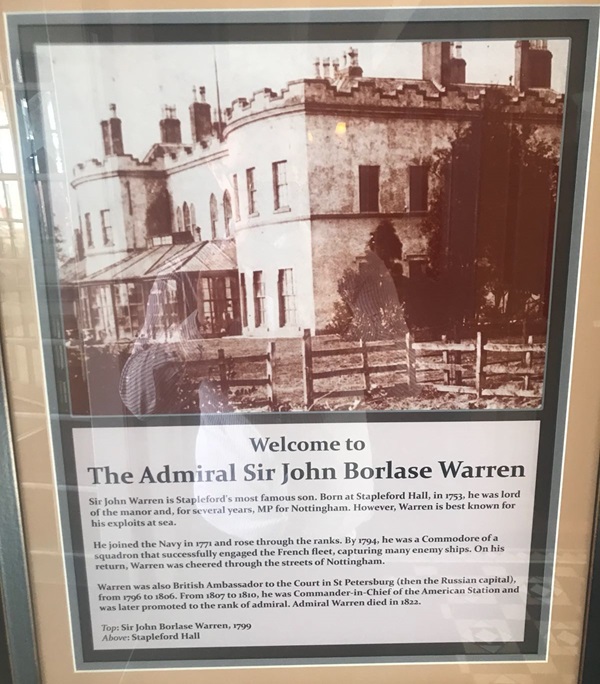
The text reads: Sir John Warren is Stapleford’s most famous son. Born at Stapleford Hall, in 1753, he was lord of the manor and, for several years, MP for Nottingham. However, Warren is best known for his exploits at sea.
He joined the Navy in 1771 and rose through the ranks. By 1794, he was a Commodore of a squadron that successfully engaged the French fleet, capturing many enemy ships. On his return, Warren was cheered through the streets of Nottingham.
Warren was also British Ambassador to the Court in St Petersburg (then the Russian capital), from 1796 to 1806. From 1807 to 1810, he was Commander-in-Chief of the American Station and was later promoted to the rank of admiral. Admiral Warren died in 1822.
Top: Sir John Borlase Warren, 1799
Above: Stapleford Hall.
Prints and text about John Harrison and solving the longitude problem.
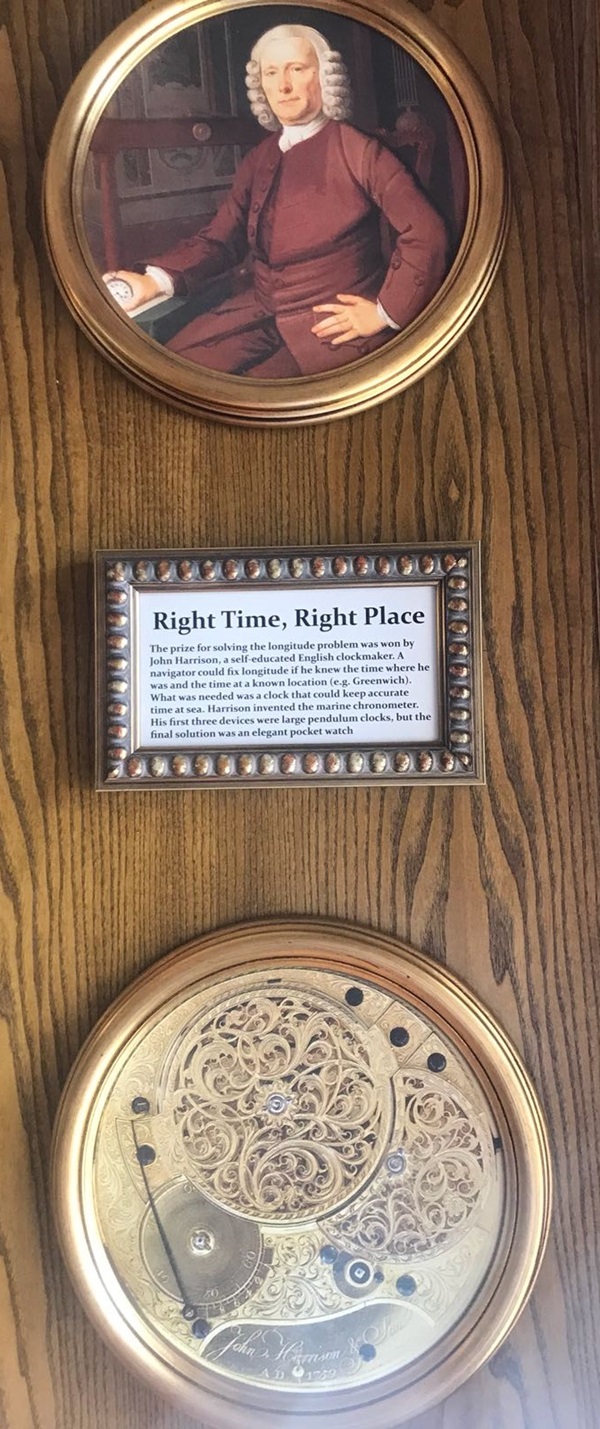
The text reads: The prize for solving the longitude problem was worn by John Harrison, a self-educated English clockmaker. A navigator could fix longitude if he knew the time where he was and the time at a known location (e.g. Greenwich). What was needed was a clock that could keep accurate time at sea. Harrison invented the marine chronometer. His first three devices were large pendulum clocks, but the final solution was an elegant pocket watch.
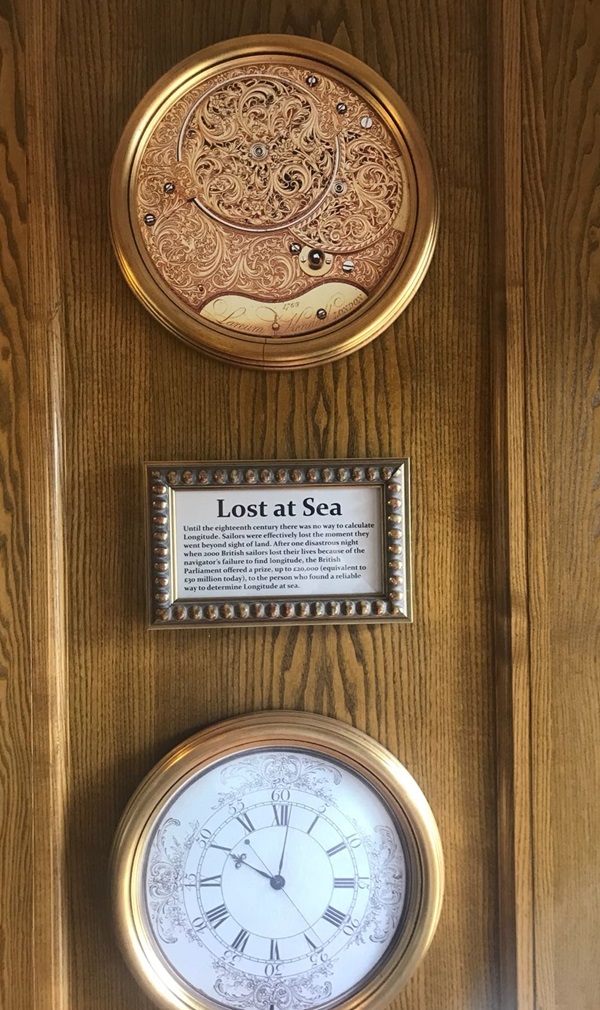
The text reads: Until the eighteenth century there was no way to calculate Longitude. Sailors were effectively lost the moment they went beyond sight of land. After one disastrous night when 2000 British sailors lost their lives because of the navigator’s failure to find longitude, the British Parliament offered a prize, up to £20,000 (equivalent to £30 million today), to the person who found a reliable way to determine Longitude at sea.
Photographs and text about industry in Stapleford.
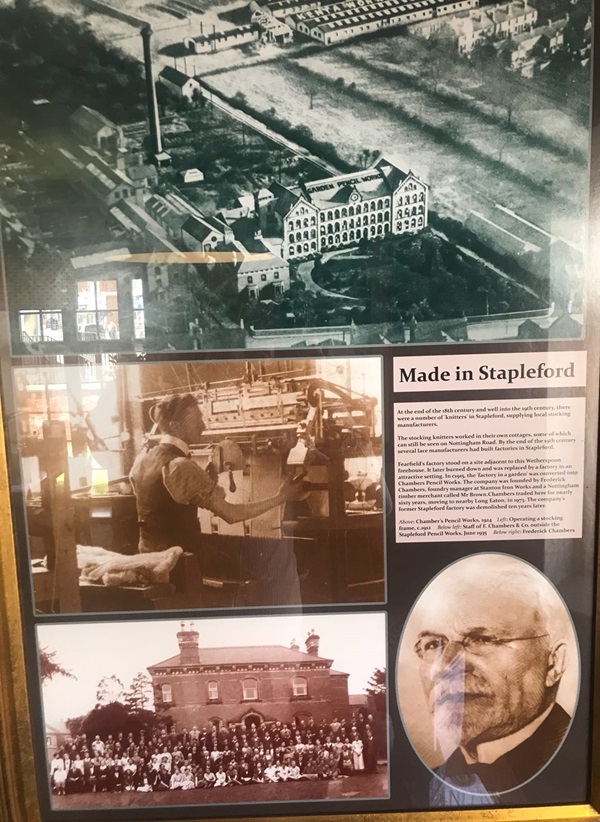
The text reads: At the end of the 18th century and well into the 19th century, there were a number of ‘knitters’ in Stapleford, supplying local stocking manufacturers.
The stocking knitters worked in their own cottages, some of which can still be seen on Nottingham Road. By the end of the 19th century several lace manufacturers had built factories in Stapleford.
Fearfield’s factory stood on a site adjacent to this Wetherspoon freehouse. It later burned down and was replaced by a factory in an attractive setting. In c1915, the ‘factory in a garden’ was converted into Chambers Pencil Works. The company was founded by Frederick Chambers, foundry manager at Stanton Iron Works and a Nottingham timber merchant called Mr Brown. Chambers traded here for nearly sixty years, moving to nearby Long Eaton, in 1973. The company’s former Stapleford factory was demolished ten years later.
Above: Chamber’s Pencil Works, 1924
Left: Operating a stocking frame, c1912
Below left: Staff of F Chambers & Co. outside the Stapleford Pencil Works, June 1935
Below right: Frederick Chambers.
Photographs and text about Stapleford Hall.
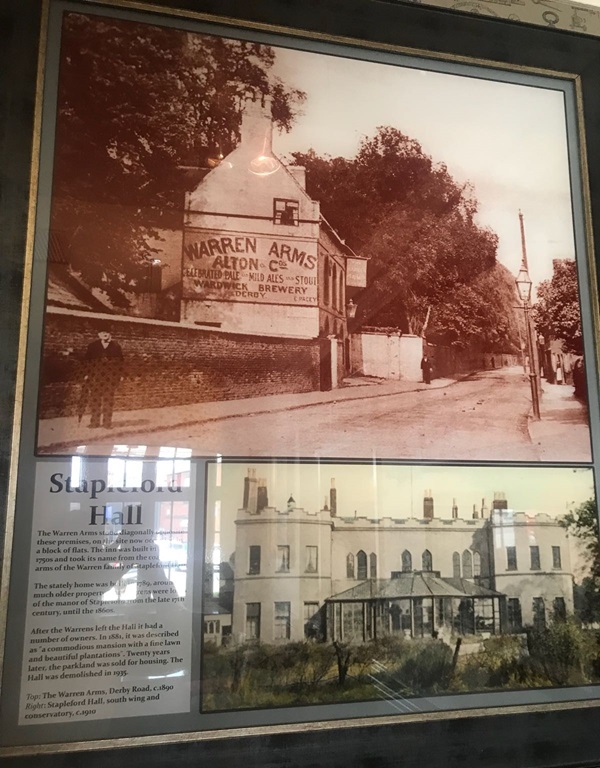
The text reads: The Warren Arms stood diagonally opposite these premises, on the site now occupied by a block of flats. The inn was built in the 1750s and took its name from the coat of arms of the Warren family of Stapleford Hall.
The stately home was built in 1789, around a much older manor of Stapleford from the late 17th century, until the 1860s.
After the Warrens left the Hall it had a number of owners. In 1881, it was described as “a commodious mansion with a fine lawn and beautiful plantations”. Twenty years later, the parkland was sold for housing. The Hall was demolished in 1935.
Top: The Warren Arms, Derby Road, c1890
Right: Stapleford Hall, south wing and conservatory, c1910.
A portrait of Admiral Sir John Borlase Warren.
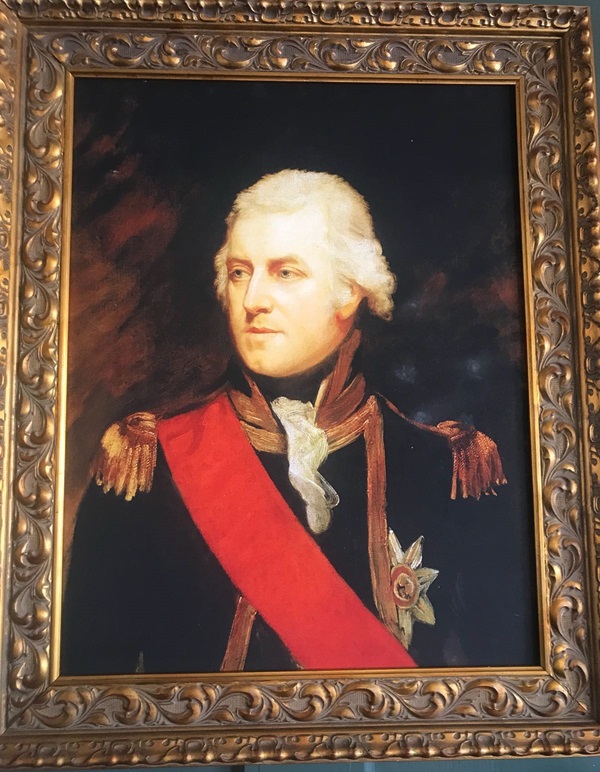
A photograph of bobbin lace-making, c1900.
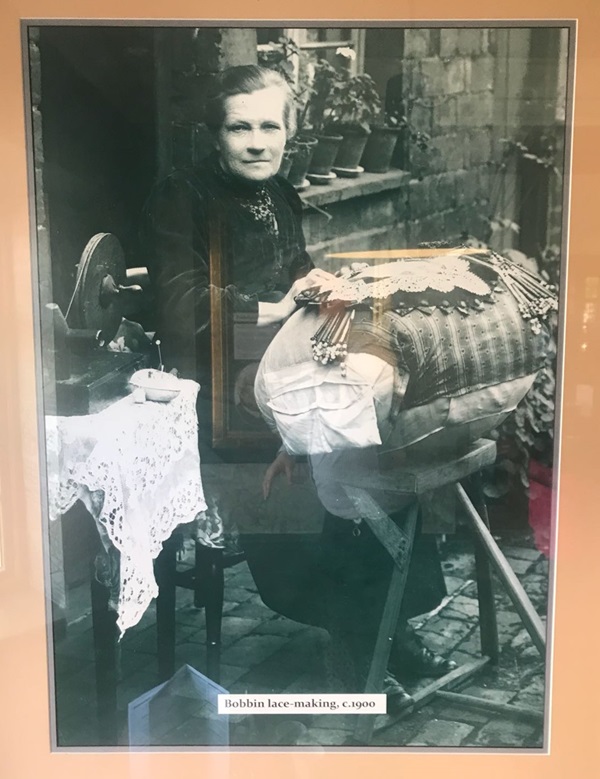
A photograph of Springfield Lace Mill, Sandiacre, c1910.
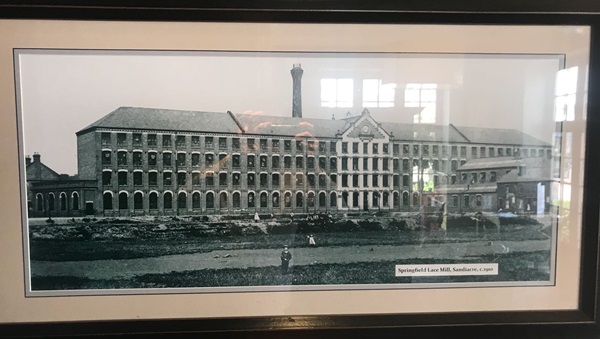
Artwork entitled Lace Bobbins, by Bill Hornsby.
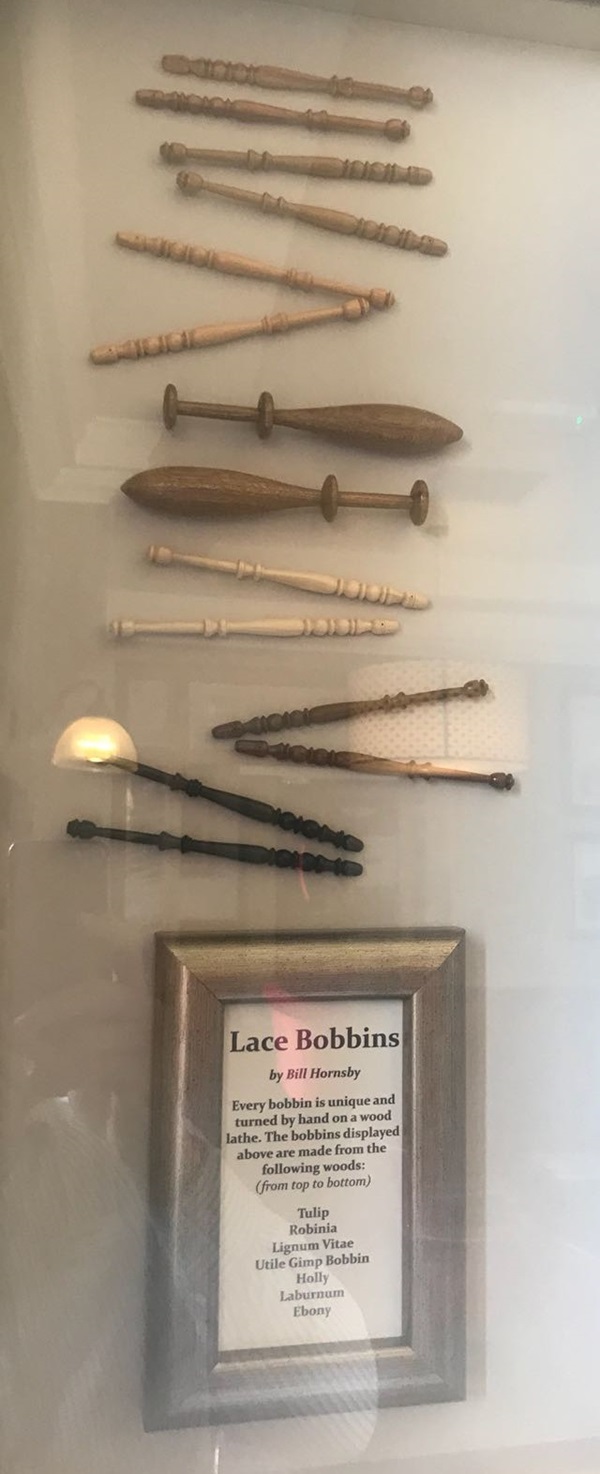
Every bobbin is unique and turned by hand on a wood lathe. The bobbins displayed above are made from the following woods:
(from top to bottom)
Tulip
Robinia
Lignum Vitao
Utile Gimp Bobbin
Holly
Laburum
Ebony
External photograph of the building – main entrance.
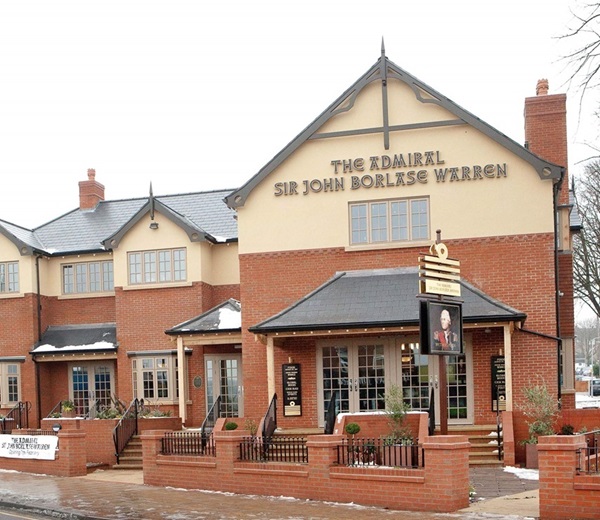
If you have information on the history of this pub, then we’d like you to share it with us. Please e-mail all information to: pubhistories@jdwetherspoon.co.uk